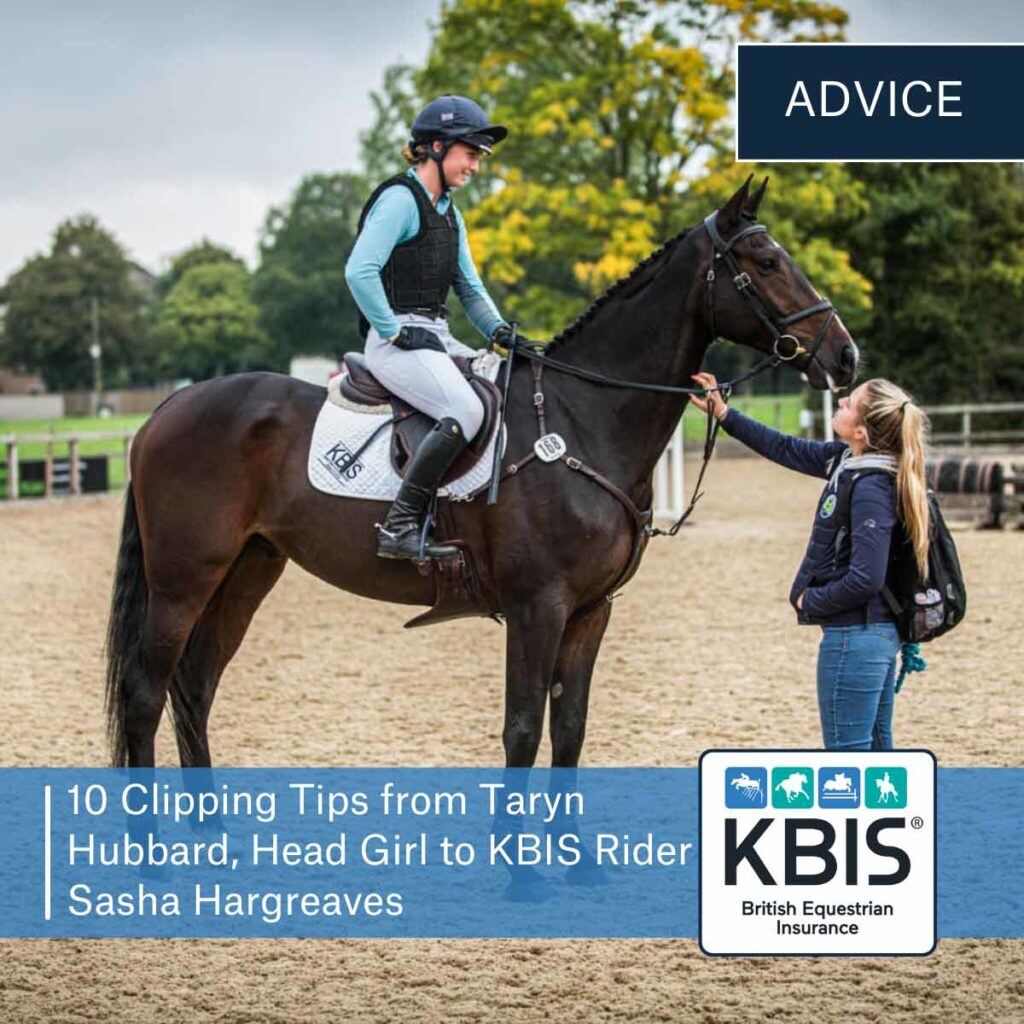It’s that time of year again! Whether you love it or hate it, the clippers are likely to need to come out to keep your four-legged friend comfortable. We caught up with KBIS Eventer Sasha Hargreaves’s super-groom Taryn who provided us with some top tips to help us get a super smart clip and a happy horse:
1. Bath your horse the day before
This is to make sure you get rid of any grease and dirt to give the best clipping results.
2. Have your clippers serviced
Make sure your clippers are serviced before the clipping season started to ensure everything is running well and all blades are sharp as if not this will pull on the horse’s hair!
3. Make sure your horse is clean and dry
If your horse is wet or dirty the clippers will pull on the hair and not clip smoothly.
4. Always have a spare set of blades
A backup set means you can be sure you won’t end up with a half-clipped horse!
5. Look after your clippers
Make sure clippers are well oiled at the beginning and oiled regularly throughout the session as well as brushing the built up hair off too.
6. Remember to take a break
If your clippers start to get hot then give them a break as this will make the horse very uncomfortable and could possibly burn them.
7. Have a circuit breaker on hand
Whether the clippers are plugged into a wall or extension lead, this will prevent any shocks if the horse is to pull or stand on the cord.
8. Step it up
Use a step to do the head, ears, and bridle path, and to check the lines are even on the top of the withers (if leaving the back/saddle patch on).
9. Check those lines
Stand in front and check all lines are as well matched up and are as even as possible.
10. Use the buddy system
Have a helping hand nearby mainly for picking up a front leg to do the armpit area and to help keep their head still. You do not want to catch your horse with the clippers when doing these intricate places.
And that’s Taryn’s top tips! If you are looking for more advice on keeping your horse happy this winter, check out our 7 boredom busters for horses spending more time in their stables through the colder months.


